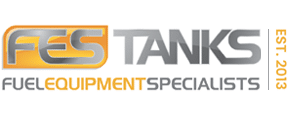Australian Fuel Storage Regulations. A Statewide Directory
Updated 16 May, 2024
When you’re making decisions about your fuel storage, knowing the fuel storage regulations that apply in your state should be an important part of your decision.
In Australia, regulations can surround everything from how and where you install your storage system to how regularly you maintain it, how you prevent leaks and how you handle safety around your storage site.
The regulatory environment is changing. To help you navigate the current situation, we’ve put together a guide to some of the most useful sites for regulatory information in each state.
Underground Fuel Storage
Underground Petroleum Storage Systems (UPSS) have the potential to leak, leading to expensive clean-up bills and damage to the environment.
UPSS Regulations require owners and operators to regularly check for leaks in the fuel tanks and pipes used to store and handle petroleum products. They also need to meet minimum standards in their day-to-day environmental management of these storage systems.
While environmental regulations apply in each Australian state, each has slightly different requirements for the storage and maintenance of underground petroleum tanks. For example: storage regulations for mining businesses in Queensland might be different to those located in South Australia.
With that in mind, you will find all the essential information for your state in the links below:
QUEENSLAND
The Queensland Government’s business and industry portal’s information on standards, codes of practice and guidelines as outlined in the Petroleum and Gas (Production and Safety) Act 2004 and the Petroleum and Gas (Safety) Regulation 2018.
NEW SOUTH WALES
The rules for UPSS systems in New South Wales changed significantly in September 2019. Most UPSS sites are now monitored and regulated by local councils. A council directory for the state can be found here to help you find the bylaws outlined by your local directorate.
However, the NSW EPA are still responsible for managing some sites in the state if they are:
- run by public authorities
- based in an unincorporated area
- subject to an environmental protection licence.
In these instances, these storage laws have to conform to the Protection of Environmental Operations (Underground Petroleum Storage Systems) Regulation 2019 and are monitored by the agency directly.
Alongside this, the NSW’s EPA site provides all the essential information on the updated regulation on the management and operation of underground petroleum storage systems (UPSS).
VICTORIA
The Victorian EPA published updated guidelines for the design, installation and management of underground fuel storage systems in 2015. You can find the guidelines here.
TASMANIA
If you’re operating in Tasmania, you’ll need to comply with the Environmental Management and Pollution Control (Underground Petroleum Storage Systems) Regulation 2020.
The links to the legislation can be found on the Tasmanian Government website here.
AUSTRALIAN CAPITAL TERRITORY
Check the Environmental Guidelines for Petroleum Storage in the ACT (June 2019) for all the information on UPSS and above-ground fuel storage requirements.
WESTERN AUSTRALIA
Information about legislation administered by the Department of Environmental Regulation, including legislation around petroleum and contaminated sites, can be found here. For information on dangerous goods codes of practice, go to this site.
Information on when a licence is required for the storage of dangerous goods can be found here.
SOUTH AUSTRALIA
The South Australian EPA are the regulating body for UPSS regulations within South Australia. As of January 2020, all petrol stations are required to have a licence for storing petroleum. These must conform with both the Environment Protection Act 1993 and the Environment Protect (Water Quality) Policy 2015. All the information about UPSS rules in South Australia can be found here. The EPA also provides guidelines about UPSS assessments here with all the latest guidelines updated to current regulations.
Information about when you need a SA fuel storage licence and how to apply is available at via Safework SA here.
NORTHERN TERRITORY
Any UPSS platforms used within the Northern Territory are monitored and managed by the EPA NT and are covered by the Petroleum (Environment) Regulations 2016. For more information on these laws, visit the NT Government page here.
Above ground fuel storage tanks – bunding and safety
If you’re installing fuel storage above ground, particular environmental safety and workplace safety regulations could apply. See the links below for information relevant to your state.
Safe Work Australia – The National Code of Practice for the Storage and Handling of Workplace Dangerous Goods can be found here.
QUEENSLAND
Worksafe Queensland: Service Station Safety Guidelines
Brisbane City Council: Guidelines for Storage and Dispensing of Petroleum Products
NEW SOUTH WALES
EPA NSW – Bunding and spills management information
VICTORIA
Worksafe Victoria: Handling and Storage Dangerous Goods Code of Practice
SOUTH AUSTRALIA
SA Government: New Dangerous Substances (General) Regulations 2017
SafeWork SA: Dangerous Goods Storage Licence
EPA SA: Bunding & Spill Management Guide
TASMANIA
WorkSafe Tasmania: Hazardous Chemical Service Station Operators Guide
WESTERN AUSTRALIA
Department of Mines, Industry Regulation & Safety: Dangerous Good Safety Information Sheet
NORTHERN TERRITORY
Worksafe NT: Dangerous Goods storage information. https://worksafe.nt.gov.au/licensing-and-registration/dangerous-goods
F.E.S. TANKS – Industry Advice
If you’re confused around what regulations apply in your area, we are here to help.
We have the knowledge you need to choose the right system and ensure it is installed and maintained in full compliance with all relevant legislation. Our range of self-bunded tanks also minimises the risk of leaks and does away with the need for expensive and complicated bunding work.
Fuel Storage Regulations and Compliance
F.E.S. fuel storage tanks are built to exceed Australian and international safety standards to ensure the highest levels of safety and environmental protection while giving you optimum flexibility and storage capacity. You can find out more about our certifications and warranties here – https://www.festanks.com.au/fuel-storage-compliance/
Should you want to buy or hire a fuel storage tank please don’t hesitate to get in touch.




30 Comments
Question regarding mobile fuel tanks and pumps on tow trailer..
Where do I find the regs associated with this type of petrol/diesel use application?
Not sure if there is any. Firstly would need compliance with road transport rules, then check state legisaltion for fuel storage.
Are there any safety signage requirements at the fill and vent point for an underground diesel storage tank? (In particular ‘no-smoking’ signs.)
Yes, generally a “No Smoking Sign” is all that is required.
Do I have to remove a decommissioned fuel tank from a property before I can register as a business.
No you do not. If you have any concerns you can contact your local council to get a site history for that particular property. This will tell you if the tank has been decommissioned or not.
What distance is required between an above ground diesel storage tank and a dangerous goods storage area
Depends on how many lines are in the above ground diesel storage tank. This will determine separation distance.
On a Civil Construction site where fuel, both diesel and unleaded, is stored in jerry cans in a shipping container on a bunded pallet, the question is, are there rules to say that diesel and unleaded can’t be stored together on the same pallet in the same shipping container?
No rule. As per AS 1940 this is all classed as minor storage and can all be placed in storage together. Typically a DGS (dangerous Goods Container) is used to store these products. I might add, correct decals / signage need to be displayed on storage container to reflect whether its Flammable or Combustible being stored, or both.
What regulations need to be followed in the removal of an existing decommissioned under ground fuel tank.
Is there a minimum depth for poly-material fuel lines to be under ground for petrol stations that service in-ground fuel cells? And what is that minimum depth?
Where can I find the regulations or rules on placement of bunted tank. Qld. Ie distance to building /boundary etc. Gold Coast
Who do I contact about removing a decommissioned fuel tank from a residential property in Victoria?
Nqpetro are people we’re happy to recommend.
https://www.nqpetro.com.au/tank-decommissioning/
I can’t find any guideline in the legislation for Petroleum and Gas or AS 4976-2008 stating if decommission fuel tanks need to removed? Or can they be filled with (compliant) hard set foam?
What is the Maintenance frequency for inspecting Bulk Fuel storage Tanks in Victoria
where can i find design rules for a 500 litre petrol tank to be mounted on a ute?
what are the safety requirements for constructing an awning over an above ground 28000 ltr diesel storage tank
Is there limit of diesel I can carry on a ute in a portable fuel pod that is not bunded. I am in Queensland
We are in WA. We have two 5000l tanks above ground. where is the best place to find out what is required with regard to bunding, etc?
Susan,
Talk to GENSET HIRE and SALES AUSTRALIA (08 9359 1988).
They are our reps in Perth and being based in WA will have a better understanding of the requirements.
Thanks
Re: NSW – Are there any Guidelines available for the layout/set-up of an above ground refuelling facility on a construction site ? There is heavy interaction between plant & workers in the area.
Hi I am in nsw and was wondering if you need a qualification to install a diesel line or can anyone do it Thanks.
What are the LPG above ground tank regulations for service stations in Victoria i.e proximity of tank from residential properties?
I am looking to build storage for approx 3400 litres of diesel underground in a shed on my farm in Queensland. What if any regulations effect this. Can I use a poly tank or do I need a steel one. What would be the best backfill material for Poly. If steel is required what is the best backfill.
[…] worth consulting an expert when planning this part of your operation. You’ll need to check the storage regulations in your state to determine whether you need bunded tanks, which are generally considered industry best […]
[…] This is a given – you can find out more about fuel storage legislation in different states here. These days it’s worth looking at self-bunded tank options that give you flexibility, save you […]
[…] the past, the cost of purchasing compliant fuel storage tanks and installing bunding to ensure compliance with state regulations has made large-scale fuel storage cost-prohibitive for some farmers. Keeping tanks clean and […]
[…] Australian Standard 1940 (Storage and Handling of Flammable and Combustible Liquids) was formally updated in August 2017. This change is important, because the standard forms an important reference for our State and Territory fuel storage legislation. […]